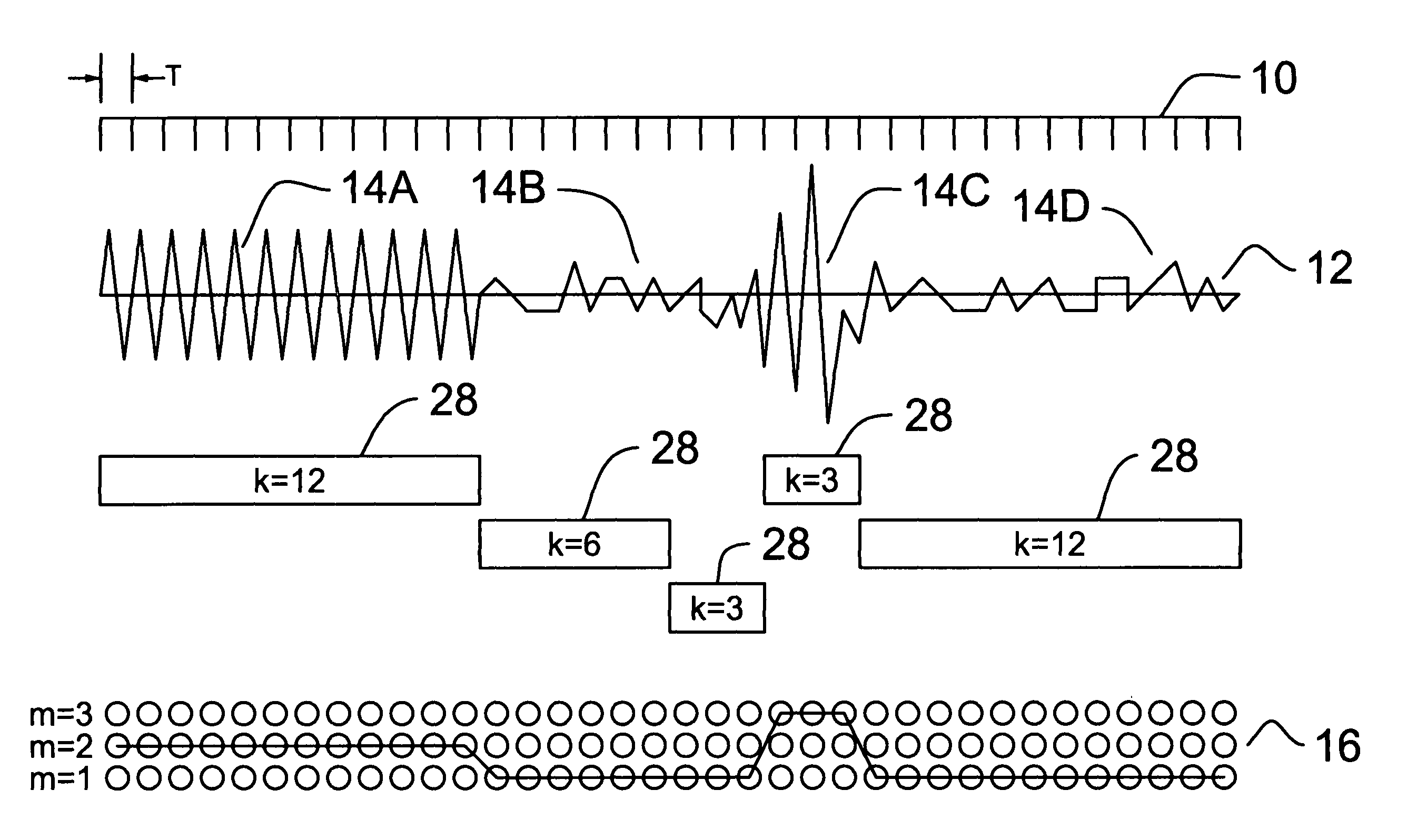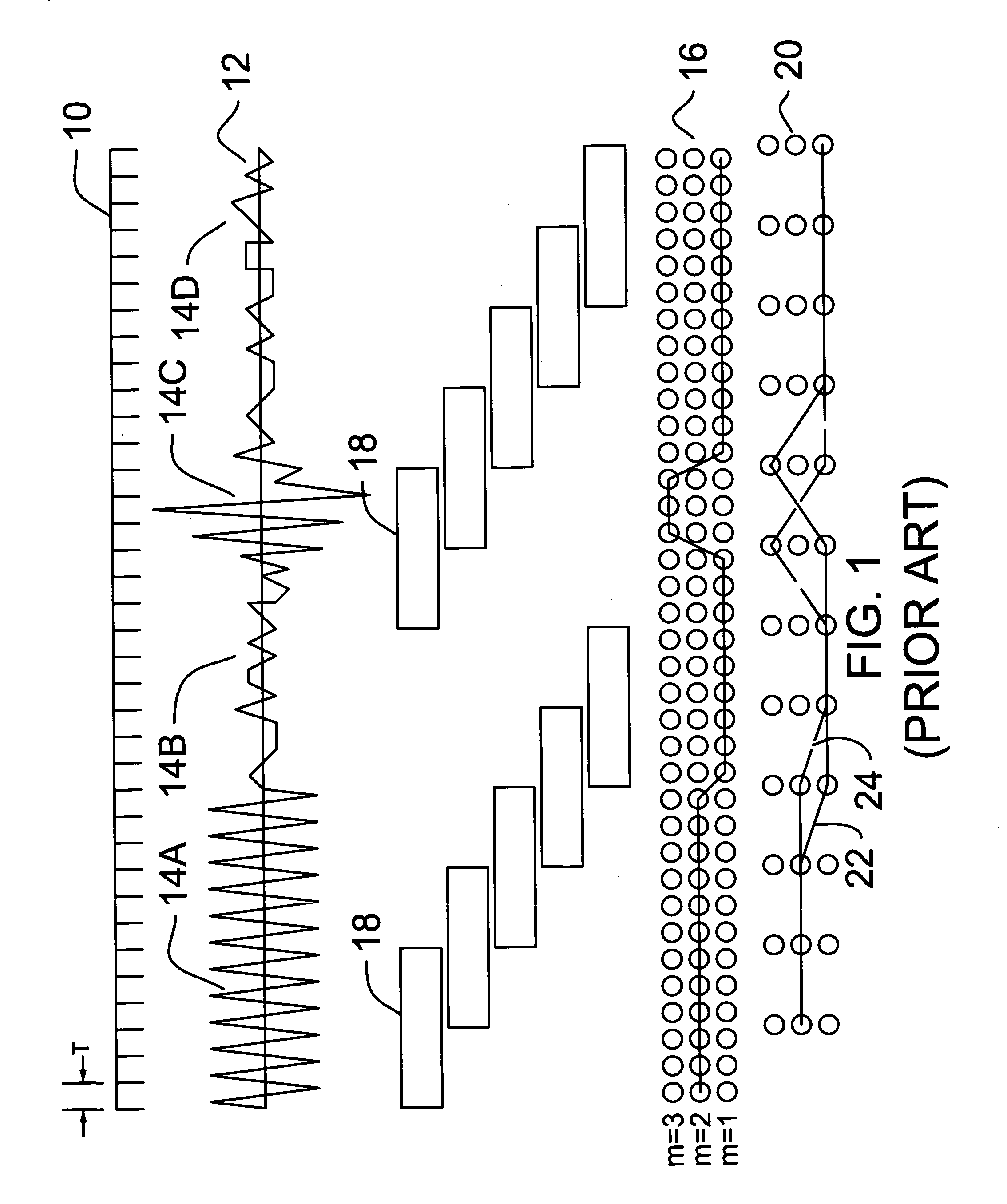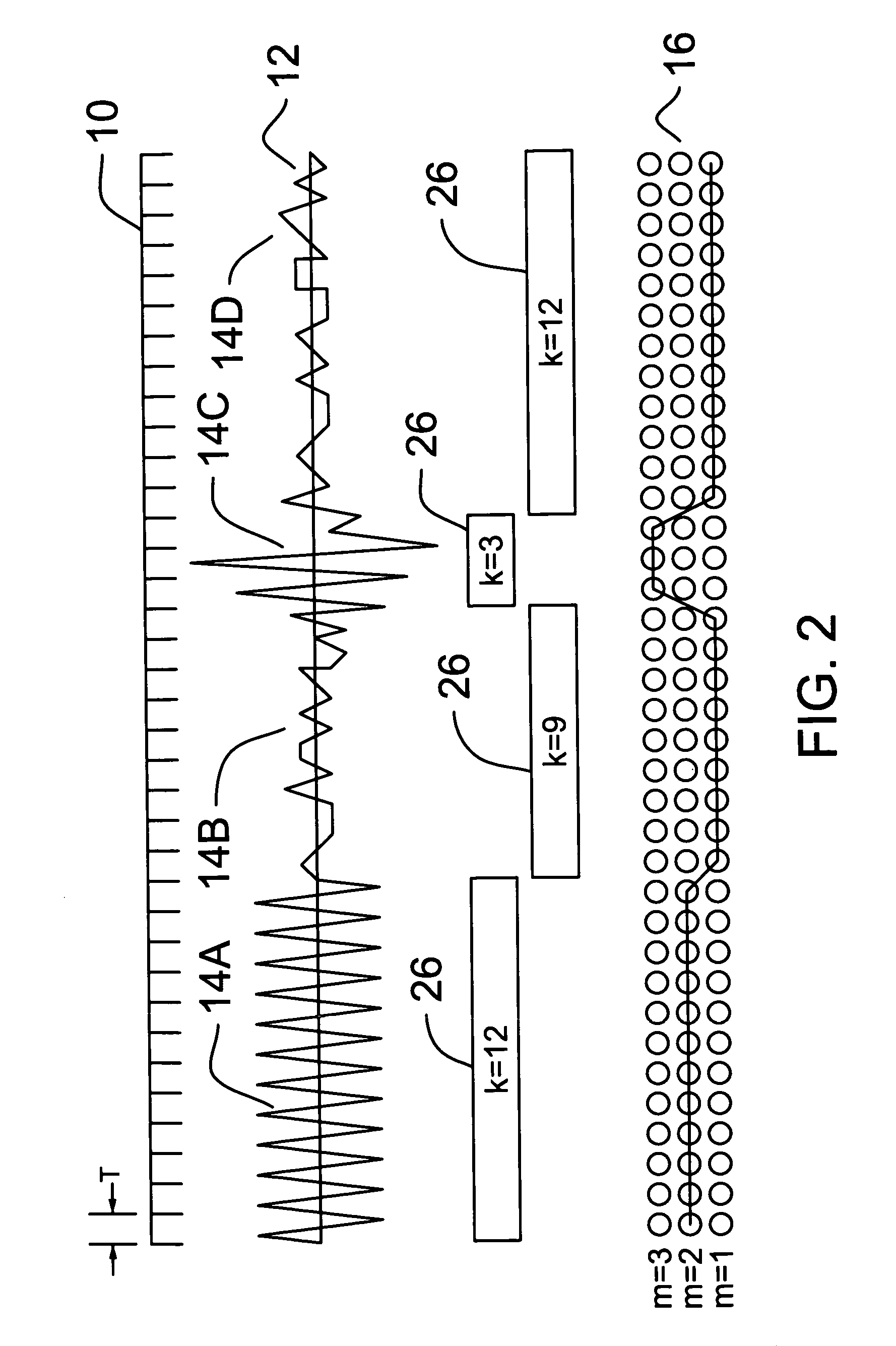Multi-resolution hidden markov model using class specific features
- Summary
- Abstract
- Description
- Claims
- Application Information
AI Technical Summary
Problems solved by technology
Method used
Image
Examples
Embodiment Construction
[0021]The method of the current invention receives data and determines the most likely signal hypothesis or symbol based on the most probable multi-resolution hidden Markov model. The symbol can be a word or phoneme in speech recognition. Unlike prior art hidden Markov model analysis, this method uses a multi-resolution hidden Markov model which combines the outputs from a variety of analysis window resolutions and feature types into a probabilistic model.
[0022]A glossary of terms and symbols is provided below to avoid confusion.
[0023]
TABLE 1TermSymbolDescriptionelemental segmentxtA uniform segment of raw data oflength T samples starting at sample1 + (t − 1)T. The finest subdivision ofdata that is considered.tElemental segment index variable,takes values from 1 to NTThe base segmentation size (numberof samples) of the elementalsegments.Analysis windowxKtDefinition 1: A non-elementalsegment of raw data of length KTsamples starting at sample 1 + (t − 1)T.Definition 2: The set of K ele...
PUM
 Login to View More
Login to View More Abstract
Description
Claims
Application Information
 Login to View More
Login to View More - R&D
- Intellectual Property
- Life Sciences
- Materials
- Tech Scout
- Unparalleled Data Quality
- Higher Quality Content
- 60% Fewer Hallucinations
Browse by: Latest US Patents, China's latest patents, Technical Efficacy Thesaurus, Application Domain, Technology Topic, Popular Technical Reports.
© 2025 PatSnap. All rights reserved.Legal|Privacy policy|Modern Slavery Act Transparency Statement|Sitemap|About US| Contact US: help@patsnap.com



